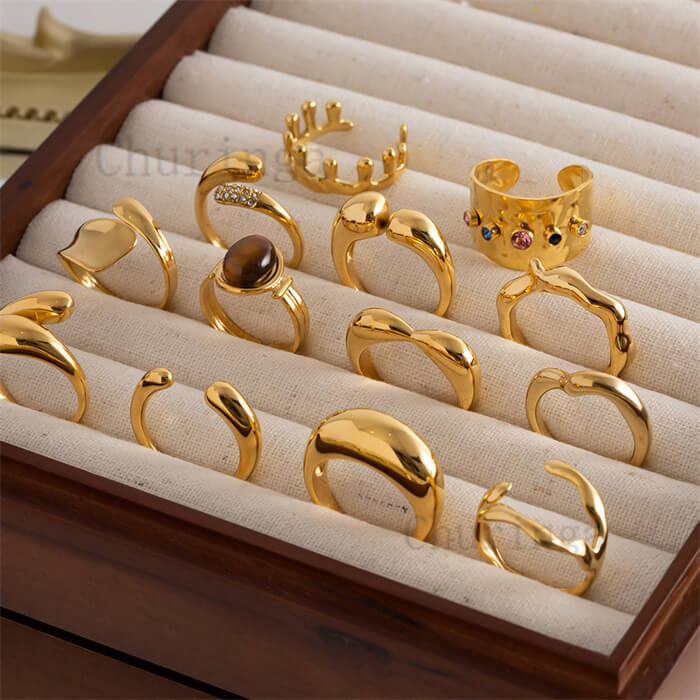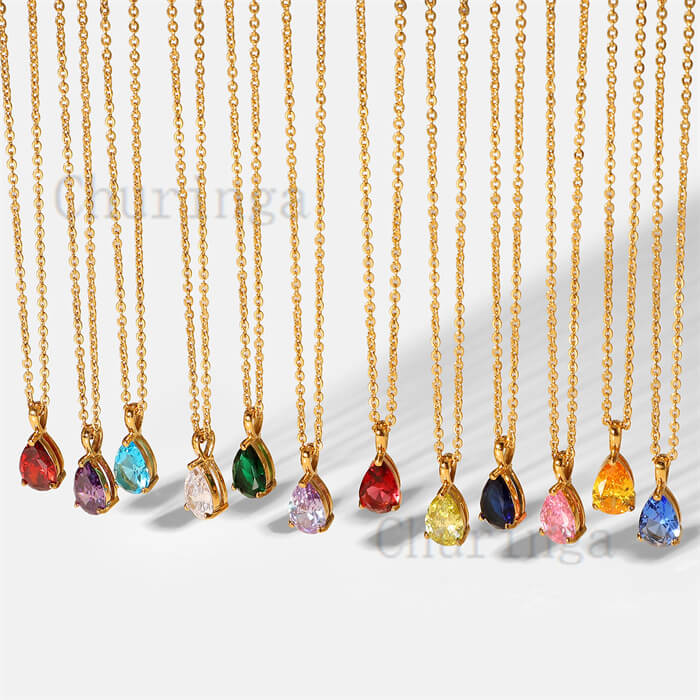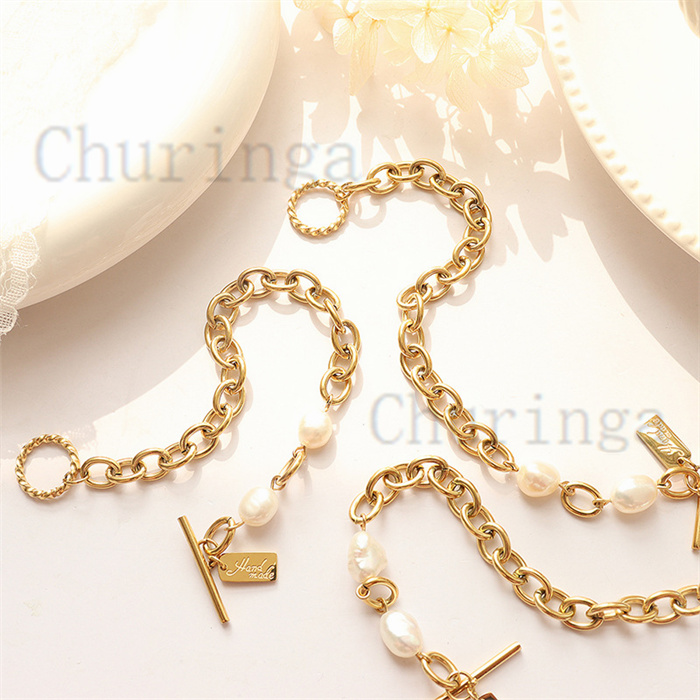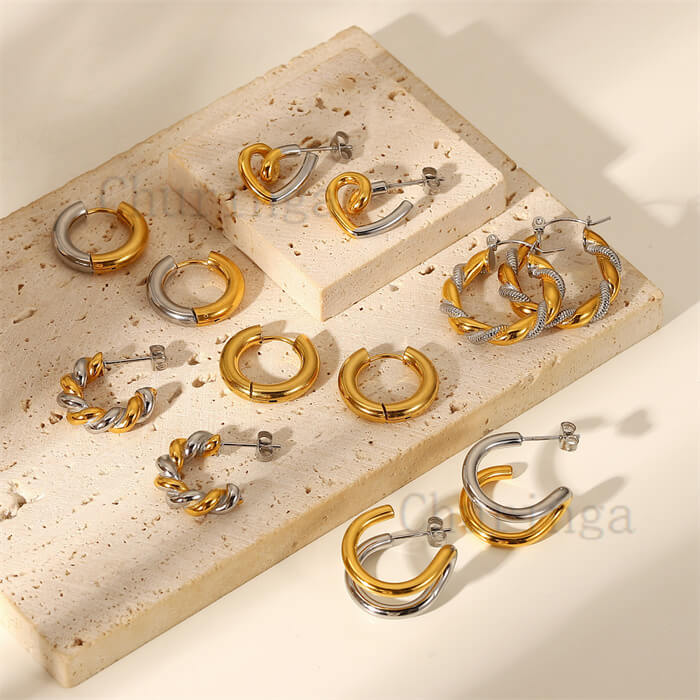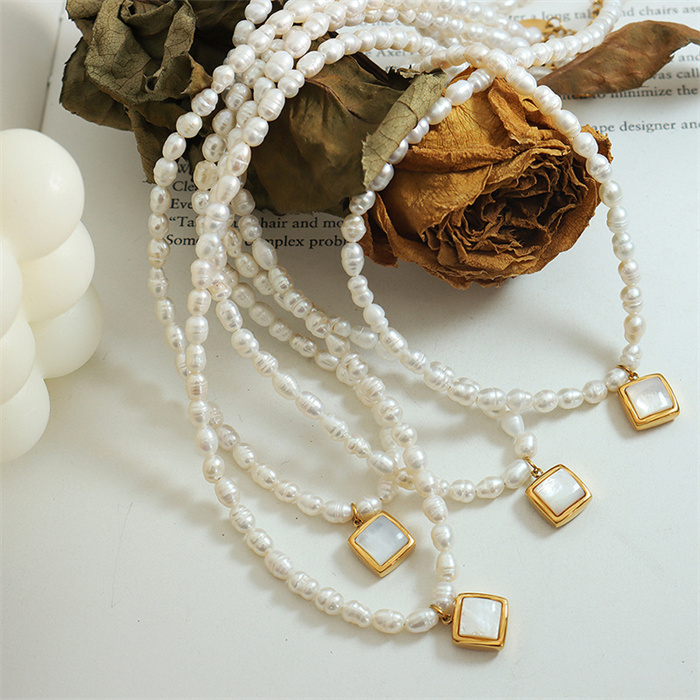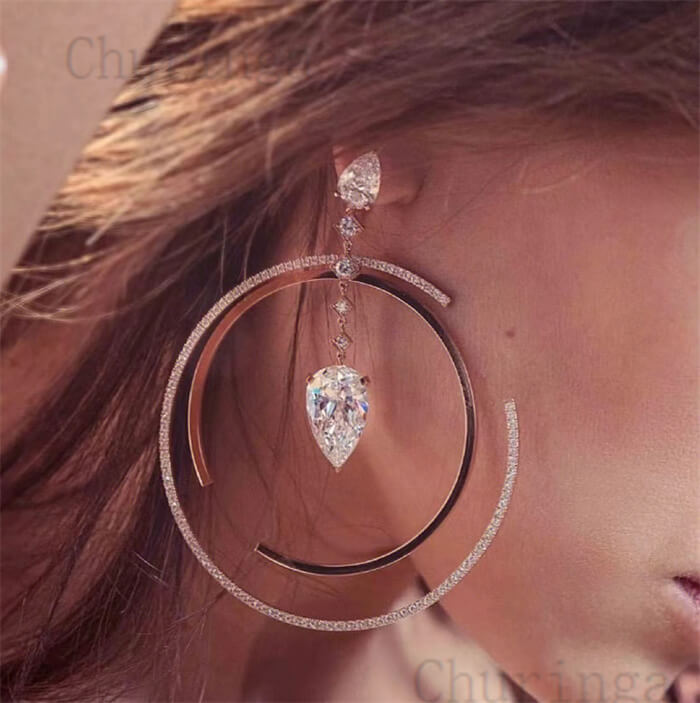316L Stainless Steel Jewelry Serise
Is 316L stainless steel good quality?
Both 316 and 316L stainless steel alloys are considered marine-grade steels; however, they do have some key differences. 316L stainless steel has a lower carbon content. To be classified as 316L stainless steel, the carbon content must not exceed 0.03%. This reduces the risk of carbide precipitation and makes it a better choice for welding, ensuring maximum corrosion resistance.
In contrast, 316 stainless steel has a moderate carbon content and contains 2% to 3% molybdenum, which enhances its resistance to corrosion, acidic elements, and high temperatures. Both materials exhibit excellent ductility, performing well in processes such as bending, stretching, deep drawing, and spinning.
Therefore, while both 316 and 316L stainless steel belong to marine-grade steels, 316L stainless steel is generally regarded as a higher-quality option in specific applications. Its corrosion resistance and welding characteristics make it a preferred material in various industrial sectors and marine environments.
What does 316L on jewelry mean?
In the context of jewelry, “316L” refers to a specific type of stainless steel used in the manufacturing of jewelry. It is a grade of stainless steel that contains low carbon content and is also known as surgical stainless steel. The “316” in “316L” indicates that the stainless steel contains about 16-18% chromium, 10-14% nickel, and 2-3% molybdenum, which gives it excellent corrosion resistance properties.
The “L” in “316L” stands for “Low Carbon,” indicating that the stainless steel has a lower carbon content than other types of stainless steel. This low carbon content helps prevent the formation of chromium carbides during welding, which can lead to a reduction in corrosion resistance. As a result, 316L stainless steel is often used in jewelry as it offers superior durability, resistance to tarnishing, and can withstand everyday wear and tear.
316L stainless steel jewelry has become popular due to its attractive appearance, affordability, and versatility. It is commonly used in the creation of various jewelry pieces, including rings, bracelets, necklaces, earrings,and pendants, and is particularly favored in the fashion industry for its modern and sleek look.
Overall, “316L” stamped on jewelry signifies that the piece is made from high-quality, low carbon content stainless steel, which provides a durable and corrosion-resistant option for those seeking stylish and affordable jewelry.
Does 316L stainless steel jewelry rust?
No, 316L stainless steel jewelry does not rust. One of the primary reasons 316L stainless steel is used in jewelry is its excellent corrosion resistance properties. Secondly, 316L stainless steel is a medical-grade material, the presence of chromium and molybdenum in the alloy composition creates a protective layer on the surface of the steel, which helps to prevent oxidation (rusting) even when exposed to moisture, water, or other corrosive elements.
Unlike regular steel, which can rust easily when exposed to air and moisture, 316L stainless steel is highly resistant to rust and tarnish. This makes it an ideal material for jewelry that needs to withstand daily wear and exposure to various environmental factors.
However, it is essential to note that while 316L stainless steel jewelry is highly corrosion-resistant, no material is entirely immune to damage over time. While it may not rust, it can still experience scratches or other wear marks. Regular cleaning and proper care can help maintain the shine and appearance of 316L stainless steel jewelry for a long time.
What is the disadvantage of 316L stainless steel?
Although 316L stainless steel has many advantages, there are still some drawbacks when used in specific applications. Its main drawback is cost; Compared to other grades of stainless steel, it may be relatively expensive, but compared to copper, silver, or gold, it is only a cheap metal. In addition, although it has excellent corrosion resistance compared to various stainless steel grades, it is not completely free from corrosion; Long time exposure to high acid environment or chloride may still cause pitting or Crevice corrosion. In addition, due to its high chromium content (over 10%), it may still oxidize over time.
Price:
One of the most significant drawbacks of 316L stainless steel is its price. This metal is one of the jewelry materials chosen in the market and is easy to find among reasonably priced choices. Jewelry made of 316L stainless steel is difficult to preserve and does not have collectible value like gold or silver.
Corrosion resistance:
Although 316L stainless steel has corrosion resistance, it is not completely corrosion resistant. Metals still deteriorate over time, especially when exposed to corrosive chemicals or environments.
Weldability:
Another drawback of 316L stainless steel is its weldability. It is not as easy to weld as other metals, and finding welders with experience using this material can be challenging.
Processability:
316L stainless steel is also more difficult to machine than other metals. Using this material to manufacture components may be challenging as it is harder than gold, silver, or copper.
Durability:
Although 316L stainless steel is a durable metal, it is not impregnable. If not properly maintained, it may still be damaged or scratched.
Please note that despite these drawbacks, 316L stainless steel remains a popular choice for many applications due to its excellent corrosion resistance, versatility, and overall durability.
Is 316L stainless steel good for skin?
Yes, 316L stainless steel is generally considered to be good for the skin. It is one of the most common materials used in jewelry and other accessories because of its hypoallergenic properties. Hypoallergenic means that it is less likely to cause allergic reactions or skin irritations in most people.
The low carbon content in 316L stainless steel reduces the risk of sensitivities that can occur with other metals. This makes it a suitable option for individuals with sensitive skin or metal allergies.
Moreover, 316L stainless steel is corrosion-resistant, which means it does not easily tarnish or rust when exposed to moisture, sweat, or other environmental factors. It also does not contain any harmful substances like lead or nickel, which are known to cause skin reactions in some people.
Is 316L good for earrings?
There are many grades of stainless steel materials, but the most common ones used for jewelry are 316L and 304 models. The Chiringa jewelry factory usually uses 316L stainless steel for casting jewelry, producing products such as 316L stainless steel earrings, 316L stainless steel necklaces, 316L stainless steel rings, 316L stainless steel pendants, 316L stainless steel perforations, and body jewelry, which are excellent choices because they are very durable, corrosion-resistant, and have better polishing effects than other stainless steel material models.
Can you shower with 316L stainless steel?
Yes, you can shower with 316L stainless steel jewelry, including earrings. 316L stainless steel is highly resistant to corrosion and tarnishing, making it suitable for exposure to water and moisture. Showering with 316L stainless steel earrings should not cause any issues, and they will not rust or lose their shine with regular contact with water.
One of the advantages of 316L stainless steel is its durability and ability to withstand everyday wear, including exposure to water, without any significant adverse effects. This makes it a practical and low-maintenance choice for jewelry, especially for those who lead active lifestyles and prefer not to remove their earrings frequently.
However, keep in mind that while stainless steel is resistant to corrosion, it is still a good practice to clean your 316L stainless steel earrings regularly. Simply rinsing them with mild soap and water during your shower can help remove any dirt, sweat, or other residues that may have accumulated. This will help keep your earrings clean and maintain their appearance over time.
Is 316L better than titanium?
Both materials have their own advantages and disadvantages. Stainless steel jewelry is widely available in various designs and styles, making it more malleable and cheaper than titanium. Titanium is known for its high strength and weight ratio, and is lighter than stainless steel, making it an ideal choice for durable and long-lasting jewelry. So the choice of 316L stainless steel and titanium depends on the specific application and personal preferences.
How long will stainless steel jewelry last?
The service life of stainless steel jewelry may vary due to various factors, including material quality, care effectiveness, and wearing frequency. Generally speaking, high-quality stainless steel jewelry, such as jewelry made of 316L surgical grade stainless steel, can be used for a lifetime with appropriate care.
Stainless steel is renowned for its excellent durability, corrosion resistance, discoloration, and scratch resistance. Compared to other materials such as silver or gold, stainless steel is more wear-resistant and suitable for daily use and long-term wear.
To ensure that your stainless steel jewelry is as long-lasting as possible, please consider the following tips:
Avoid contact with irritating chemicals: Although stainless steel has high corrosion resistance, it is best to avoid exposing jewelry to irritating chemicals, such as chlorine, bleach or acid cleaner, because these items will still cause damage over time.
Regular cleaning: Regularly clean stainless steel jewelry with mild soap and water to remove dirt, grease, and residue. You can gently clean areas that are difficult to reach with a soft cloth or toothbrush.
Proper storage: When you are not wearing stainless steel jewelry, store it in a cool and dry place, away from direct sunlight and moisture. Consider using jewelry boxes or soft bags to prevent scratches.
Avoid rough activities: Although stainless steel is very durable, try to avoid exposing jewelry to rough activities or excessive force, as this may cause scratches or other damage.
Check for loose components: If your stainless steel jewelry has gemstones or other components, please regularly check for any signs of looseness or damage and repair immediately.
About Jewelry Customization
- How to Choose the Correct Jewelry Factory OEM & ODM?
- Jewelry Factory Custom &Wholesale Silver/316L Stainless Steel Viking Ring
- From Your Idea to Samples and Mass Production
- How to customize jewelry at Churinga Jewelry Factory?
- How ensure the security of customer-customized jewelry?
- How to contact us (Churinga Jewelry Factory)Custom Jewelry, Jewelry Supplier, Wholesale Jewelry
- Stainless Steel Jewelry Manufacturer,Stainless Steel Jewelry Factory
- Jewelry Mass Production Companies in Churinga Jewelry Factory
- 18K Gold-Plated Jewelry
- Is the Quality of Stainless Steel Jewelry Good?
- Silver Jewelry Casting
- The difference between pure silver jewelry and stainless steel jewelry
- Wholesale Jewelry,Churinga Jewelry Factory Wholesale of stainless steel pendants
- Wholesale 316L Stainless Steel Jewelry,Customize 316L Stainless Steel Jewelry
- Is 316L stainless steel good quality?What does 316L on jewelry mean?
